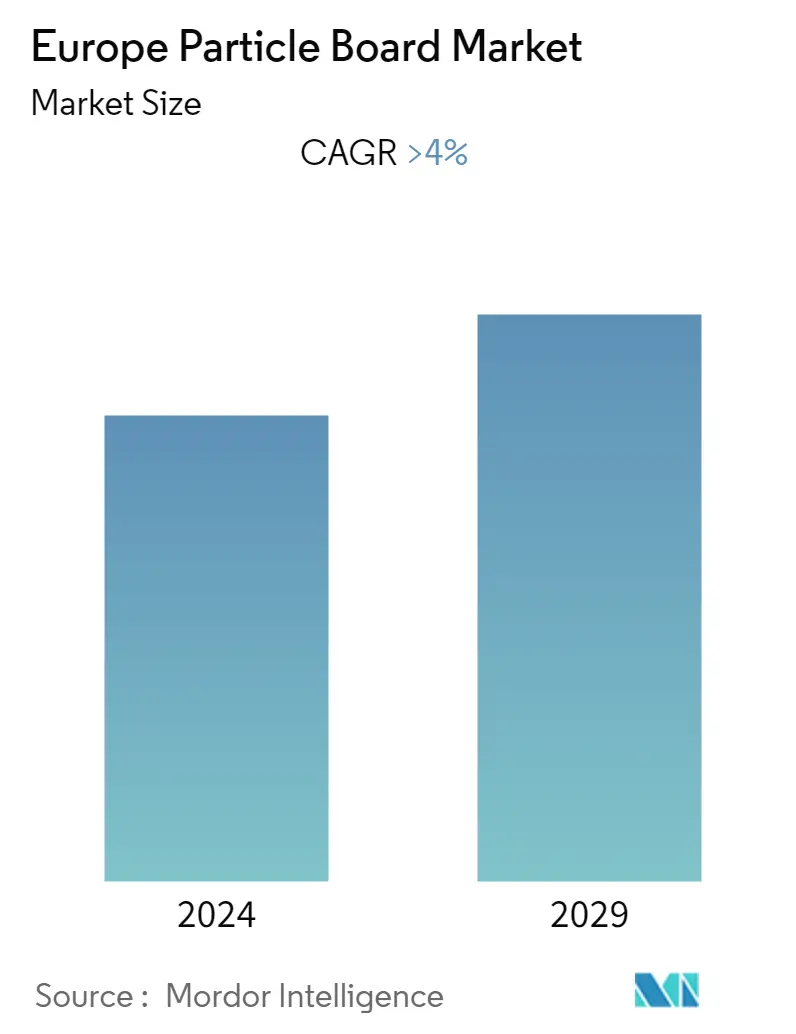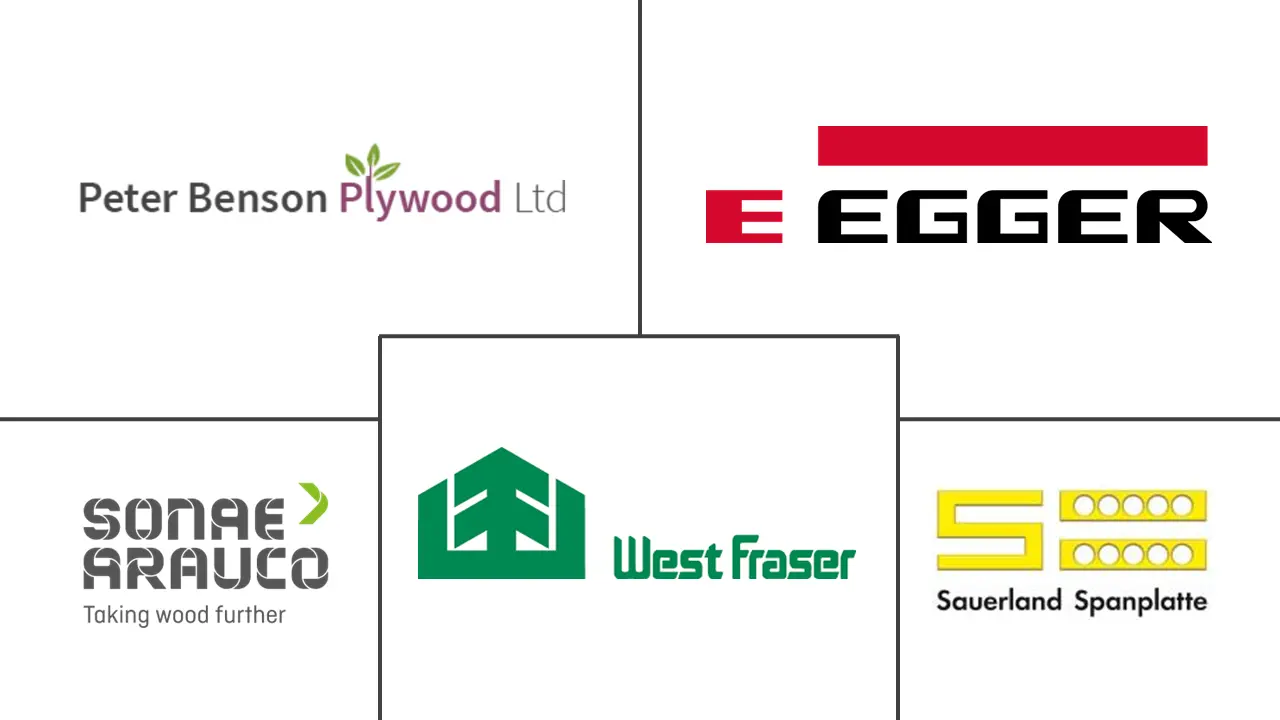Market Size of Europe Particle Board Industry

| Study Period | 2019 - 2029 |
| Base Year For Estimation | 2023 |
| Forecast Data Period | 2024 - 2029 |
| Historical Data Period | 2019 - 2022 |
| CAGR | 4.00 % |
| Market Concentration | Low |
Major Players
*Disclaimer: Major Players sorted in no particular order |
Europe Particle Board Market Analysis
The European particle board market is anticipated to register a CAGR of greater than 4% during the forecast period. As home construction expansion was prominent in Europe prior to the pandemic, the COVID-19 outbreak had a substantial impact on residential construction growth. This has most certainly resulted in project delays and cost overruns. Currently, the particle board market has recovered from the pandemic and is expanding rapidly.
- Over the short term, the increasing demand for particle boards for furniture manufacturing, coupled with the ease in availability of raw materials, is projected to fuel market growth over the forecast period.
- However, it is estimated that the threat of medium-density fiberboard as a substitute is expected to hamper the market growth over the forecast period.
- Nevertheless, upcoming construction and infrastructure projects are projected to generate opportunities in the future for the European particle board market.
Europe Particle Board Industry Segmentation
Particle board, commonly known as chipboard or low-density fiberboard, is an engineered wood product that is pressed and extruded from wood chips and synthetic resin or other suitable binders. Particle board is less expensive, denser, and more uniform than traditional wood and plywood. The European particle board market is segmented by raw material, application, and geography.
By raw material, the market is segmented into wood (sawdust, shavings, flakes, chips), bagasse, and other raw materials. By applications, the market is segmented into construction, furniture, infrastructure, and other applications. By geography, the market is segmented into Germany, United Kingdom, France, Italy, Russia, Spain, NORDIC Countries, and Rest of Europe. The report covers the market size and forecast for the European particle board market in 7 countries across the European region. For each segment, the market sizing and forecasts have been provided based on volume (kilotons).
| By Raw Material | |
| Bagasse | |
| Other Raw Materials |
| By Application | |
| By Country | |
Europe Particle Board Market Size Summary
The European particle board market is experiencing a robust recovery and expansion following the disruptions caused by the COVID-19 pandemic. The market is driven by the increasing demand for particle boards in furniture manufacturing and the availability of raw materials, which are expected to sustain growth over the forecast period. Despite the competitive threat posed by medium-density fiberboard as a substitute, the market is poised to benefit from upcoming construction and infrastructure projects. Particle boards are favored in building interiors due to their lightweight, cost-effectiveness, and environmental benefits, making them a popular choice for flooring, partitions, and other applications. The construction industry's growth, particularly in Germany, which has the largest share in the European construction sector, is a significant factor contributing to the demand for particle boards.
Germany stands out as a dominant player in the European particle board market, with substantial production volumes and a strong construction sector that drives demand for wood-based materials. The country's construction industry is bolstered by government investments and a rising urban population, which have led to increased residential and commercial building activities. The German furniture market also plays a crucial role, with significant contributions to the economy and opportunities for innovation. The European particle board market is characterized by its fragmented nature, with key manufacturers like SAUERLAND Spanplatte, Peter Benson (Plywood) Limited, West Fraser Timber Co. Ltd, Sonae Arauco (UK) Ltd, and EGGER Group actively participating in the market. These companies are focusing on sustainable solutions and expanding their product offerings to meet the growing demand.
Europe Particle Board Market Size - Table of Contents
-
1. MARKET DYNAMICS
-
2. MARKET SEGMENTATION
Europe Particle Board Market Size FAQs
What is the current Europe Particle Board Market size?
The Europe Particle Board Market is projected to register a CAGR of greater than 4% during the forecast period (2025-2030)
Who are the key players in Europe Particle Board Market?
SAUERLAND Spanplatte, Peter Benson (Plywood) Limited, West Fraser Timber Co. Ltd, Sonae Arauco (UK) Ltd and EGGER Group are the major companies operating in the Europe Particle Board Market.

